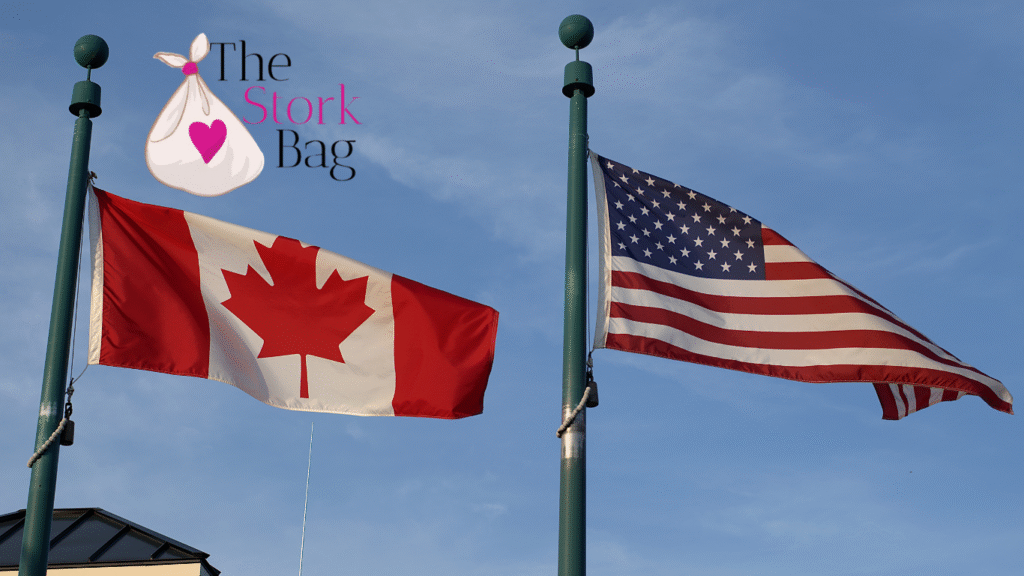
This article is definitely not what we usually post but unfortunately it’s something we need to do as a small business. While we do run a business that caters to pregnancy and baby related items, we are also a small business that is being affected by all the changes happening right now.
Running a small business in Canada often means looking south of the border for opportunities. After all, the U.S. is our biggest trading partner, and many entrepreneurs rely on American customers, suppliers, or both. But when tariffs come into play, they can shake things up in ways that hit small businesses the hardest.
Rising Costs That Are Hard to Absorb
Tariffs usually mean higher costs on goods crossing the border. For Canadian businesses exporting items like steel, aluminum, or even certain food products, those extra charges can make prices less competitive in the U.S. Larger companies may be able to absorb some of that, but for small businesses working with tighter margins, every added dollar counts. Sometimes that means having to raise prices, which risks losing customers.
Supply Chain Headaches
Many Canadian businesses are part of North American supply chains. You might ship a component to the U.S. for assembly or import parts needed to finish your own products. Tariffs can create delays, extra paperwork, and unexpected costs. For small businesses, where time and resources are already stretched, these disruptions can cause serious slowdowns.
When Shipping Becomes Unsustainable
For some businesses, tariffs have made shipping to the U.S. simply unprofitable. The added costs, combined with higher logistics expenses, mean that smaller players often have no choice but to suspend cross-border shipping altogether. While this can protect them from losses, it also cuts off access to a massive market and forces them to rethink their growth strategies. We have also made the decision to suspend shipping to US due to the changes in De Minimis threshold. The cost to ship to Us from Canada is just not possible for us without this option.
The Uncertainty Factor
One of the toughest parts about tariffs is not knowing what’s coming next. Trade policies can change quickly, and it’s hard to make long-term plans when you don’t know if your costs will jump again in six months. That uncertainty can make you hesitant to expand, hire new staff, or invest in new equipment—things that are often key to growth.
Finding Ways to Adapt
The good news is that Canadian entrepreneurs are resilient. Many small businesses have started looking beyond the U.S. for new markets, whether in Europe, Asia, or within Canada itself. Others are focusing on creating niche products or adding extra value so they can better absorb costs and still stand out. Government export programs and grants can also offer support, so it’s worth checking what resources are available in your region.
Final Thoughts
Tariffs may feel like something completely out of your control—and to a large degree, they are. But by staying flexible, exploring new markets, and keeping an eye on government supports, Canadian small businesses can find ways to weather the storm. While tariffs add challenges—sometimes even forcing businesses to stop shipping to the U.S.—they can also push entrepreneurs to innovate, diversify, and strengthen their business for the long term.
While these changes are affecting our small business greatly, we really hope to expend to Canadian and European markets and hold on to the hope that these changes will be reevaluated as soon as possible so we can start serving our US customers again.
We definitely want to say a big “Thank you” to all of our customers and to our US customers “We hope to see you soon”
